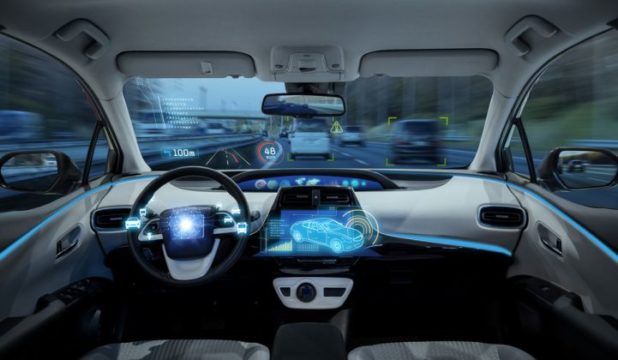Since the Android Jelly Bean upgrade was announced yesterday, here is a comparison among the top mobile OSes out there. We’ll focus only on a few specific departments. Please not that this is not a review.
Apps
iOS: 650,000 apps. 225,000 for iPad. Still tops as far as smartphone platforms go.
Android: Android is currently at 600,000 total apps. Most of those will run on tablets, but the number of tablet-optimized offerings is significantly lower than iOS (Google won’t give an official number, but a quick run through Google Play makes the situation abundantly clear).
Windows Phone: Windows Phone currently has 100,000 apps available for download, which is considerably less than the other two. But with the launch of the Surface tablet, we can see this number rise pretty soon.
Maps
iOS: Apple now has a maps service of its very own like Google and Microsoft. Not only does it deliver traffic updates, points of interest, and turn-by-turn navigation (which is well integrated throughout iOS 6), there are 3D maps which both look cool and might be helpful when lost in the middle of a crowded metropolis. But the lack of public transit directions hurts, even if they’re offering a third-party API solution.
Android: Google Maps in Jelly Bean will likely be unchanged from what Google showed off a few weeks ago at its dedicated maps event: 3D buildings and offline caching will be added to supplement the top notch combination of search, turn-by-turn navigation, and Street View. Plus, the search giant is going crazy with mapping the insides of notable locales—Compass Mode employs a phone’s gyroscope to give you 360-degree interior views—so expect to see more of that over time.
Windows Phone: Windows Phone 7 was a showcase for Microsoft’s Bing maps, but the mobile navigation turf will belong to Nokia on Windows Phone 8. The good news is, that means terrific NAVTEQ maps, turn-by-turn navigation, 3D buildings, offline caching, and dynamic routing for public transit. There aren’t many bells and whistles here, though, for better or worse.
Facebook Integration
iOS: Facebook is integrated throughout iOS 6, which means you can update your status and upload images from various apps (not to mention notification center), sync contacts, and have your Facebook events coordinate with your iOS Calendar. Plus a third-party API is on the way, so all apps can integrate Facebook into their wares.
Android: Android has always been good for Facebook sharing, and there’s no reason for that to change with Jelly Bean. You can share and upload from pretty much anywhere in the OS, or inside most Android apps. Plus you can pull Facebook data for your contacts already stored on your phone, or pull all your Facebook friends into your contacts.
Windows Phone: Facebook integration has always been one of Windows Phone’s selling points, as the platform seamlessly integrates features like status updates, images, Contacts, Chat, and Events into Microsoft’s own sections (People, Messaging, Calendar, etc). It’s as well-designed as Facebook integration can get.
Voice Commands
iOS: Siri wasn’t amazing in iOS 5, but it worked. In addition to being able to dictate texts and emails, schedule calendar events, and set timers, Siri in iOS 6 has much more promise, given its ability to pull data from even more sources (sports scores, movie times, dinner reservations), in more useful ways. Plus, Siri will be able to interface with car audio and navigation systems once iOS 6 goes live in the fall.
Android: With Jelly Bean, speech recognition is about to get a big update. Google has always allowed for voice search and dictation across the entire OS, but now it taps into Knowledge Graph and a built-in speech recognizer that will be in future devices. Not only should Android voice recognition improve dramatically, but it will recognize voice input even while offline and, like Siri, can spit back Wolfram-like semantic search results (with or without your voice).
Windows Phone: Windows Phone also has voice commands, allowing you to place calls, send texts, search the web, and launch an app all from your device. It may not have the depth of Google and Apple’s efforts, but it’s there.
Mobile Payments
iOS: Here comes the surprise. The iPhone doesn’t have NFC, which means Apple doesn’t have much to offer in terms of mobile payments. But Passbook is Apple’s way in. When it’s up and running, it will collect tickets, rewards cards, debit/credit cards and more into a single app relies on both GPS and QR codes to work. It can also deliver updates and notifications for the items you have stored in Passbook (flight updates, expiring deals, etc). It’s clearly been designed with NFC payments in mind; we just have to wait a few months until Apple makes it official.
Android: For the time being, Google Wallet—which includes mobile payments, deals/rewards/offers, and more—remains unchanged. Google announced new NFC-based features today unrelated to payments; hopefully it’s enough to entice hardware partners to include the tech in future devices.
Windows Phone: With the arrival of Windows Phone 8 will come Wallet, which is Microsoft’s full-fledged attempt at, well, a digital wallet. You’ll be able to store credit/debit cards and rewards/loyalty cards, not to mention the ability to access deals. But what might set Windows Phone apart from Android and iOS is that it will make use of secure NFC elements stored on SIM cards, which will allow for more flexibility—and security—when it comes to the preferred standards of card companies and mobile carriers (Google Wallet has hit a wall because of resistance to its own built-in secure elements). Save for Apple strong-arming everyone into playing by its rules, this may be the most frictionless way for NFC-based payment technologies to succeed.
Video Chat
iOS: Apple has FaceTime, which can place calls over 3G or Wi-Fi, and works fairly well. But its also a pretty insular app that only works with other Apple devices.
Android: Android’s Gmail/Google Talk-based video chat system is a bit more universal, considering you can video chat with anybody who has Gmail on a Mac, PC, or Android phone. And yes, you can chat over 3G or Wi-Fi. But Google’s ace in the hole, surprisingly enough, might just be its updated Google+ app, which features improved Hangout support and will be available for both Android and, some day soon, iPad.
Windows Phone: Microsoft’s secret voice chat weapon is Skype, which is arguably the most universal standard of them all. There are already proper Skype apps for Macs, PCs, iOS, and Android—and Microsoft owns all of them.
Call Features
Android: Android lets you compose a series of texts you can use as quick auto-replies when declining a call, and also lets you filter out calls from specific people, but it lacks the ability to enter into a Do Not Disturb mode.
Windows Phone: This is another weak point in Windows Phone, as there are no pre-composed texts you can fire off to people you don’t want to talk to, nor is there any sort of Do Not Disturb functionality. But there are advanced filtering and call block options for those people you’re trying to avoid.
Smarter Icons
iOS: When it comes to dynamic app icons, Apple is sorely lacking. Sure it has badges that let you know when there are new messages, emails, or notifications, but they don’t really tell you anything else. One of the things we’d hoped for was that Apple would smarten up its app icons. Let them change to display information. Unfortunately, Apple is still stuck in the past on this one.
Android: Android doesn’t really do much with app icons either, and that doesn’t change with Jelly Bean. But since the App drawer is pushed into the secondary layer of Android, it doesn’t matter. Android employs widgets to take on the task of real-time updates, which allows for a fair amount of customization when it comes to getting your mail/weather/calendar updates from your home screen in a quick manner. They can sometimes be messy and unruly, but when properly implemented, are quite useful.
Windows Phone: Windows Phone 8’s Live Tiles are the cream of the crop amongst smartphones. Not only can they display notifications and vital info (such as texts, mail, weather calendar events), but they arrange into a neatly-organized grid that is now bolstered by the ability to break tiles into three different sizes depending on how you want info displayed. Microsoft is way ahead of everyone else in this regard.
If you think there is some other major difference between these operating systems, do let us know via your valuable comments. Also, we’ll bring you a full review of the Jelly Bean update soon. Keep watching.
Via: Gizmodo












